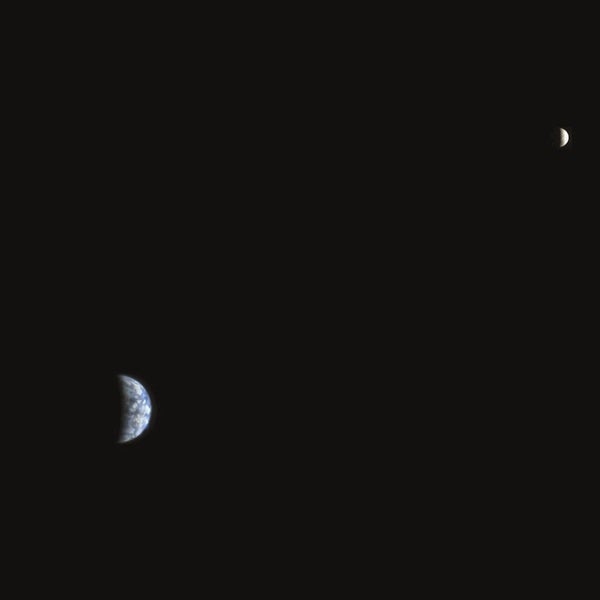The best time for a venusian astronomer to look at Earth would be when our planet is opposite the Sun as seen from Venus. This is called opposition. Amateur astronomers may remember the nice views we had of Mars’ surface features in October 2020, when the Red Planet was at opposition. For any hypothetical observers on Venus, Earth at opposition would appear almost three times as large as Mars did from Earth, creating even better views. From Venus, even small amateur telescopes would have been able to easily distinguish continents, oceans, polar ice caps, and shapes of large land masses like Greenland and Australia. Larger telescopes could see even more detail.
Of course, that’s assuming that these telescopes aren’t enveloped in Venus’ thick atmosphere. Not only would it block their view of the sky, its crushing pressure would also destroy any telescopes. So instead of being on the surface of Venus, let’s say that the telescopes are in orbit. If the Hubble Space Telescope was orbiting Venus, venusian astronomers would be able to distinguish the Big Island of Hawaii very easily.
Now let’s say there are amateur space telescopes above the atmosphere at Venus. A 4-inch space telescope would only distinguish features on Earth much larger than Hawaii, and even an 8-inch space telescope would not quite make out the Big Island. A 24-inch space telescope, on the other hand, would see Hawaii as a nice dot. All of them would see gorgeous views of Earth’s larger features. But although these telescopes are above the clouds of Venus, they would still have to contend with the clouds on Earth blocking those views, just as when we try to look at Venus from Earth.










